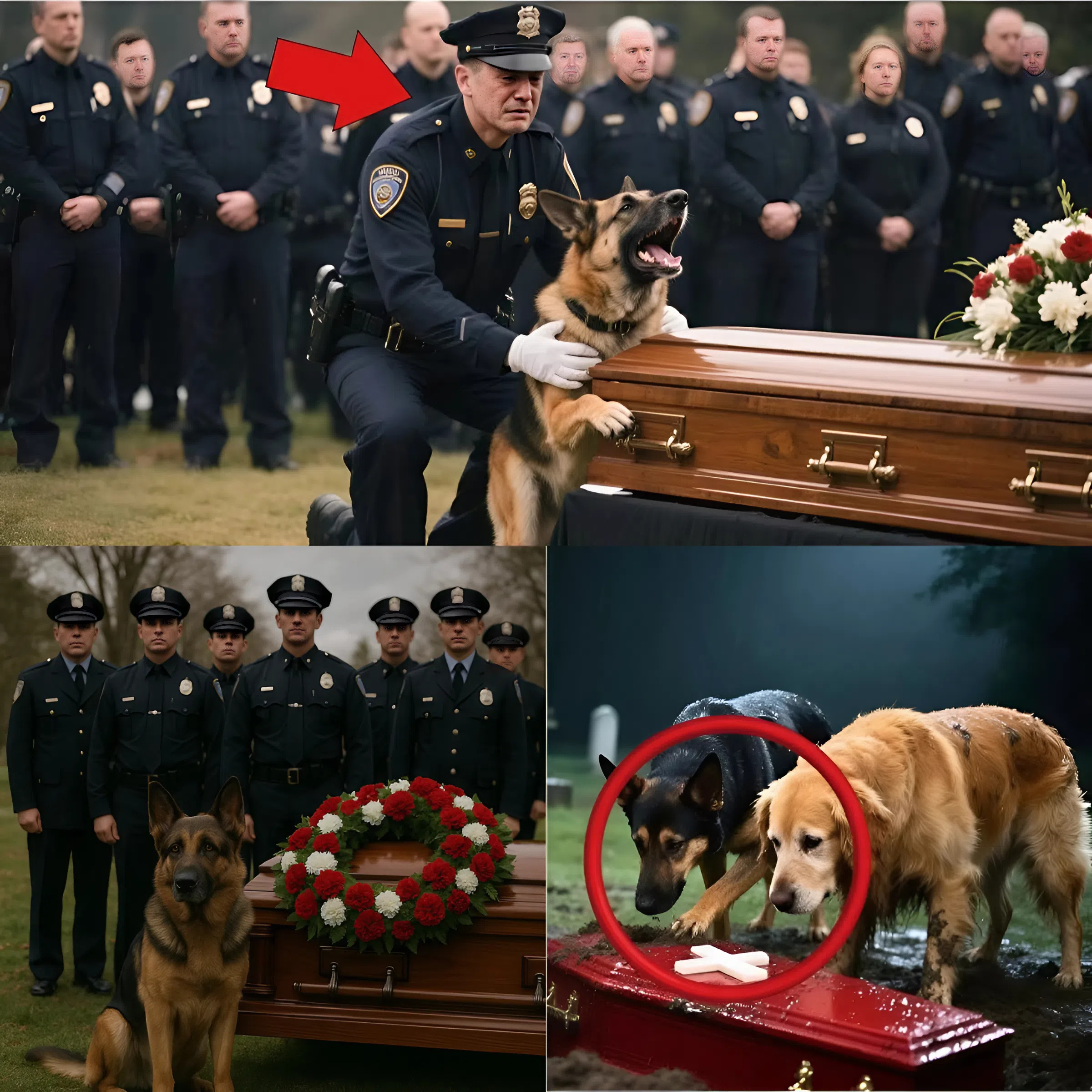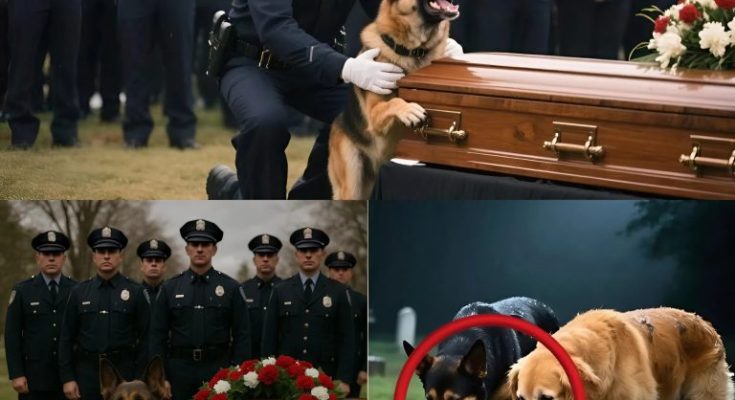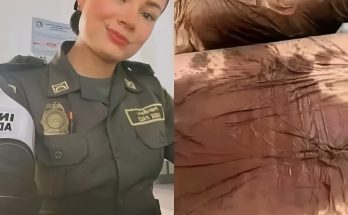What Should Have Been a Farewell Became a Beginning
On a gray, overcast morning in Spartan Falls, Ohio, hundreds of mourners stood in silent reverence at the funeral of Officer Mark Delaney, a decorated police veteran known for his courage, fairness, and unshakable dedication to justice. The silence was broken not by bagpipes, nor by the 21-gun salute, but by a sudden and chilling outburst from Delaney’s most loyal companion—Koda, a seven-year-old Belgian Malinois and his former K9 partner.
As the casket was lowered, Koda began barking uncontrollably. At first, mourners assumed it was grief. But when the dog lunged forward, pawing at the casket and growling with panic and desperation, something shifted in the air. Several officers tried to restrain him. He bit through his leash. He dug into the earth. His paws bled. His body trembled. His eyes never left the coffin.
And then he collapsed beside it, shaking and refusing to move.
What began as a disturbing display of mourning would soon become the unraveling of a national scandal—and a mystery darker than anyone at that cemetery could have imagined.

A Dog’s Cry That Couldn’t Be Ignored
Most animals mourn. But Koda’s behavior wasn’t just grief—it was resistance. So unrelenting was his refusal to leave the gravesite that Officer Delaney’s widow, Julia, requested a second autopsy be conducted—“for Koda,” she told investigators.
The original report had stated that Delaney died of a heart attack. But new toxicology revealed traces of a rare neurotoxin—a military-grade poison that mimics cardiac arrest but leaves the body within hours. It would have gone unnoticed—if not for the dog.
Suddenly, Officer Delaney’s death wasn’t just a tragedy. It was murder.
The Man Delaney Had Become — And the Secrets He Held
Over the next few weeks, the town of Spartan Falls would begin to learn the truth: Delaney had been living a double life. By day, he was a respected patrol officer. By night, he was secretly investigating a network of corruption tied to a private intelligence contractor named Sentrax Solutions, known for securing off-the-books deals with federal agencies and allegedly erasing individuals from criminal databases.
Delaney believed that Sentrax was using their influence to make evidence “disappear,” eliminate witnesses, and recruit officers willing to play along. He had quietly documented these patterns—his own logs, photos, deleted bodycam footage, and memos—stored not in department servers, but in an encrypted drive hidden inside his home.
And that’s when Koda stepped in again.
While visiting the Delaney residence with family, Koda began barking and scratching at the hardwood floor beneath the study desk. Beneath the floorboards, they found the hidden drive.
What it contained would horrify even hardened investigators.
A List of Names — And Vanished Lives
Delaney had compiled a list of 27 names, many of them former informants, whistleblowers, and low-level criminals who had cooperated with internal affairs. These individuals had one thing in common: they were all now missing—disappeared without explanation or legally declared dead.
Among them was a 14-year-old girl who had witnessed a police shooting, a whistleblower from the Department of Homeland Security, and a man who claimed he was blackmailed into signing over his business to a government subcontractor.
Worse still, Delaney had documented suspicious activity within his own department: missing bodycam footage, suspicious overtime logs, and evidence that had been signed out—and never returned.
The Fingerprint That Brought It All Crashing Down
As investigators began connecting the dots, a key piece of physical evidence emerged: a latex glove found in the trunk of Delaney’s patrol car. Koda—again—refused to move when the trunk was opened and fixated on the glove.
Forensic tests revealed a partial fingerprint belonging to Detective Carl Renner, Delaney’s former partner and lifelong friend.
Under pressure and facing overwhelming evidence, Renner broke. In a tearful, recorded confession, he revealed he had been coerced into poisoning Delaney by a group of “black-badge” operatives working for Sentrax. They had threatened his family. He insisted that he had tried to warn Delaney, but it was too late.
The poison had been slipped into a shared thermos of coffee during their last patrol together.

The Fallout: One Dog, One Town, and the Collapse of a Lie
Koda’s actions had now exposed the greatest law enforcement scandal in the region’s history. In the weeks that followed:
-
19 officers were placed on administrative leave
-
Sentrax Solutions was stripped of its federal contracts
-
The FBI launched Project HAWKEYE, a deep audit of all K9-assisted units and their partner firms
-
The Governor of Ohio publicly awarded Koda the Medal of Civilian Valor—the first time a K9 had received it posthumously on behalf of his partner
And most haunting of all: a bronze statue was commissioned of Koda and Delaney, side-by-side, to be placed in the Spartan Falls Police Memorial Plaza. It reads:
“He Didn’t Bark for Attention. He Barked for the Truth.”
The Aftermath: A Nation Reflects on a Dog’s Sense of Justice
For all our sophisticated tools—surveillance drones, lie detectors, cyber forensics—it was a dog’s instinct, love, and refusal to stay silent that broke a conspiracy.
Koda never gave up.
Even in mourning, he barked for the one man he loved—and who loved him back.
And in doing so, he changed a nation’s perception of justice, loyalty, and what it means to speak truth when no one wants to hear it.



